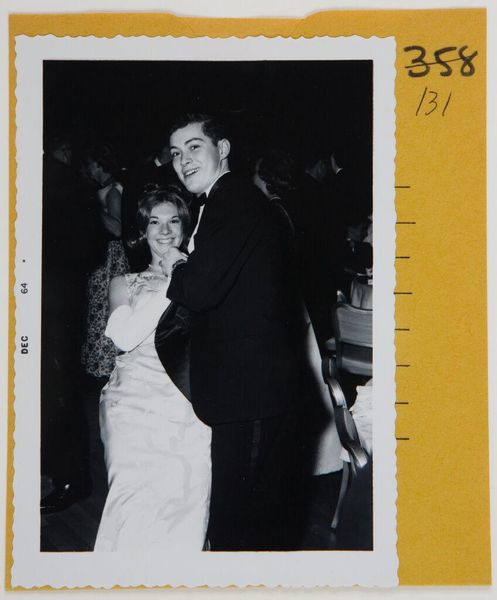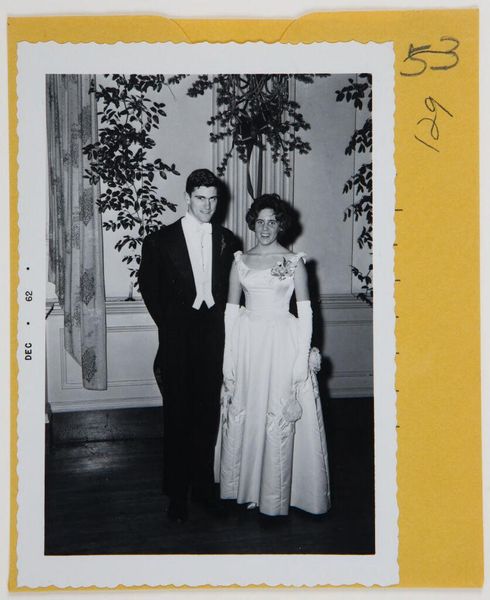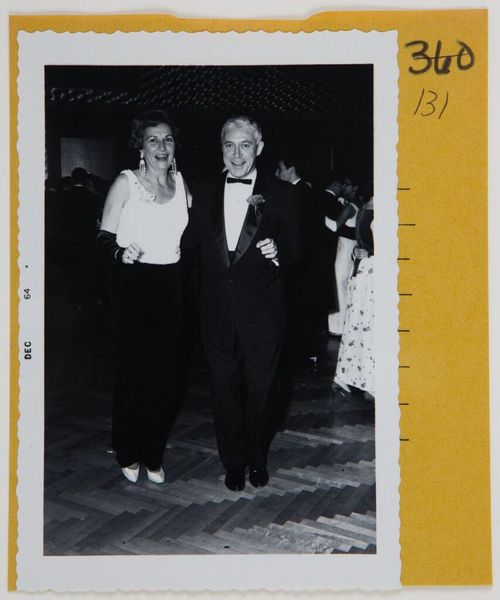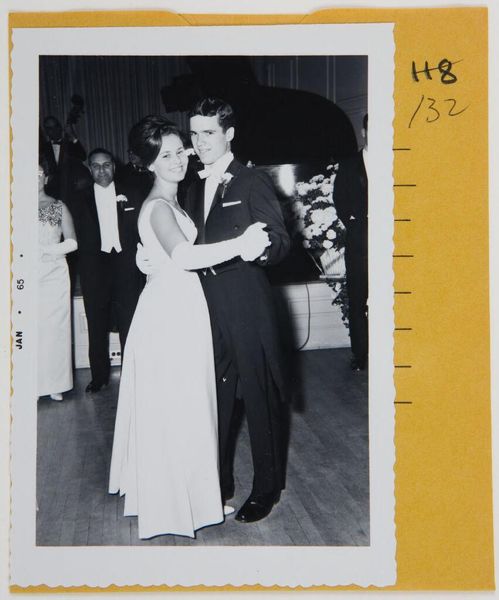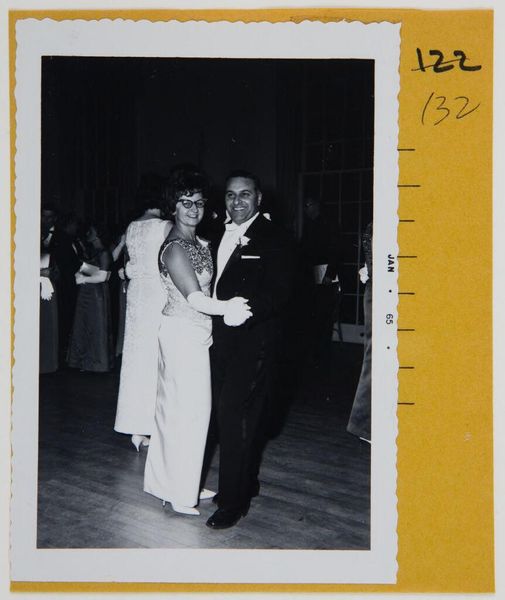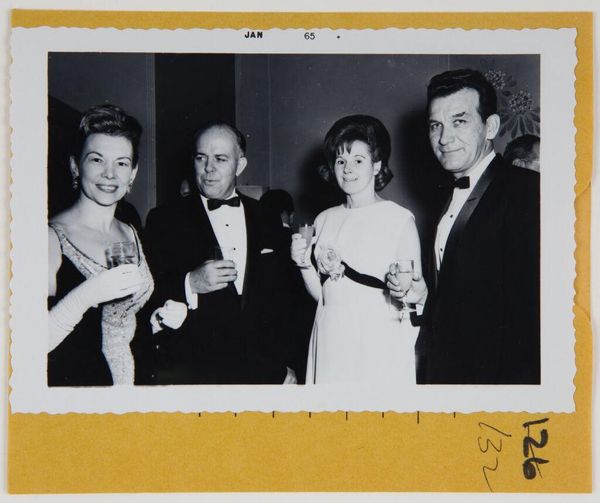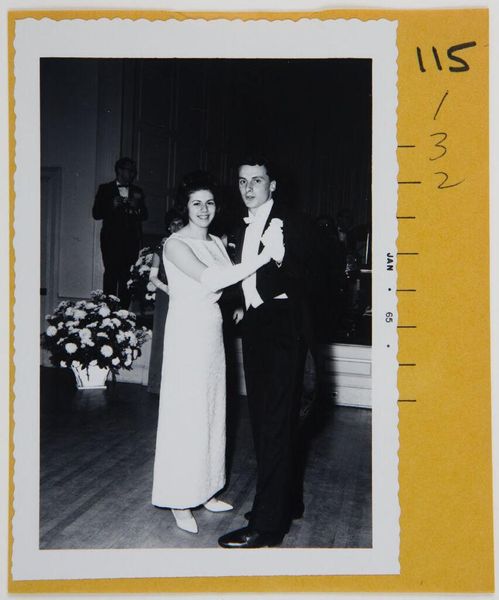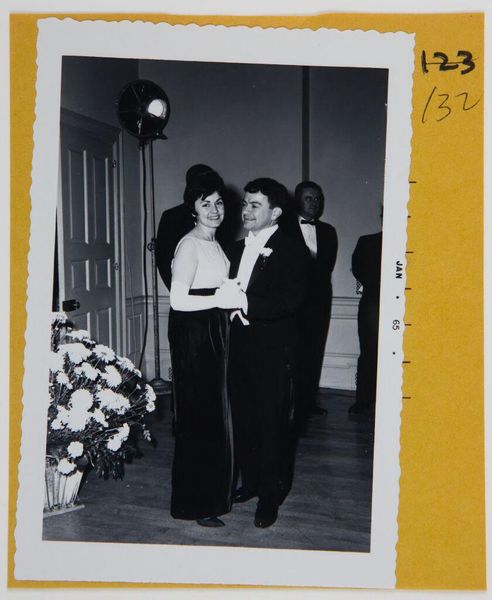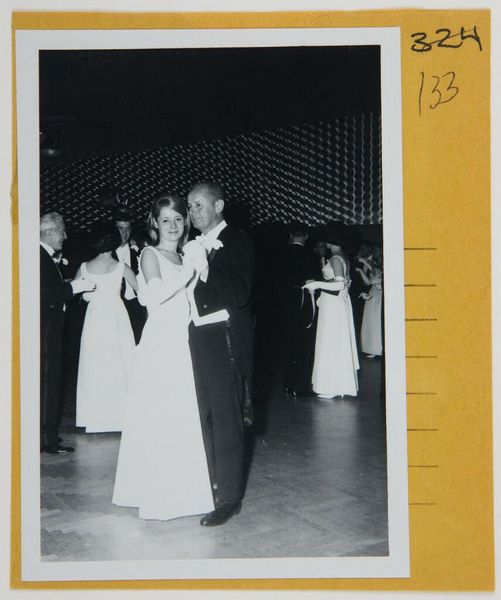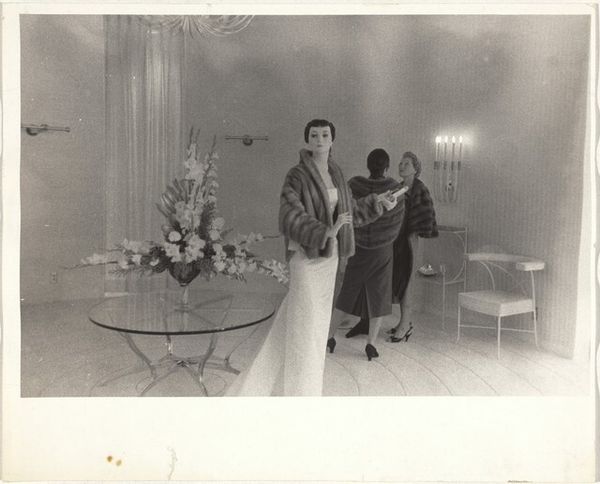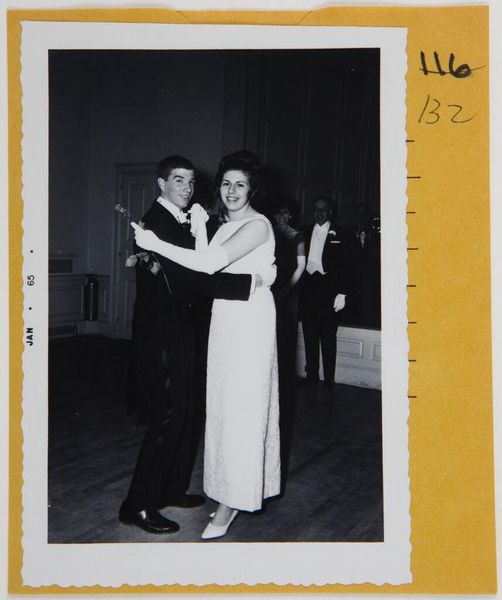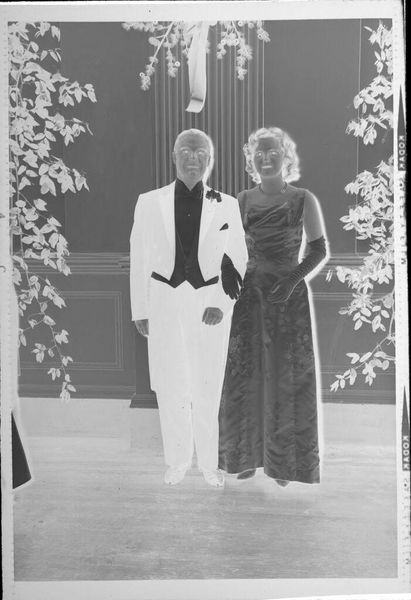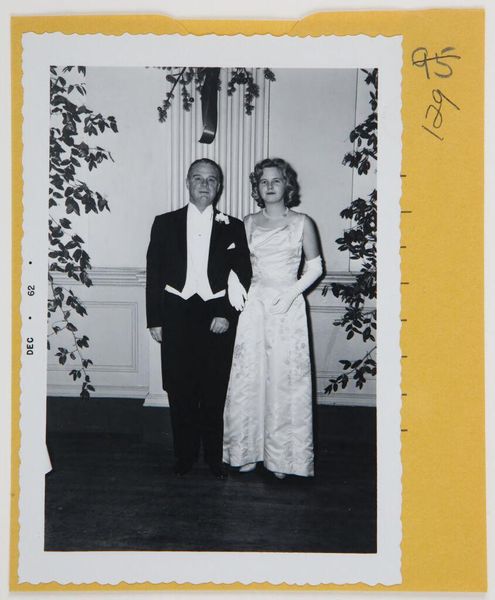
Dimensions: image: 9.5 × 7.2 cm (3 3/4 × 2 13/16 in.) sheet: 10.8 × 8.5 cm (4 1/4 × 3 3/8 in.)
Copyright: National Gallery of Art: CC0 1.0
Curator: Warhol’s polaroid from 1972, titled “Irving Blum and Unidentified Woman,” instantly gives me that party vibe from another era. Editor: Absolutely! The almost harsh flash and informal composition—it's less about careful posing and more about capturing a fleeting moment, isn’t it? The formal black attire creates a contrast against that grainy texture too. Curator: The black tuxedo signals an awareness of traditional iconography but quickly breaks it down with his quintessential Pop Art touch. Irving Blum’s traditional masculinity, signaled through that formal wear, blends with Warhol's aesthetic vision here. Editor: Exactly! Looking closely, I’m struck by the compositional balance—how the two figures are placed, how their smiles and gaze converge. The formal attire gives an aesthetic harmony, while also bringing a semiotic dissonance considering Warhol’s usual art practice. Curator: Good point! The tension between intimacy and impersonality is classic Warhol, I think. We have an unnamed woman alongside the well-known Blum. The cultural memory connected to this pairing suggests the dynamics of the art world elite—the men usually were given historical significance, while women were nameless. Editor: I find the texture fascinating too. It flattens and simplifies their faces, almost making them masks. Are we meant to read specific emotions? Or are we getting a stylized interpretation about glamour and performance? Curator: You know, Warhol's interest always came through an understanding about persona. What we wear as masks become our only face at some point. This photograph as an artifact speaks volumes about Pop Art's self-referential nature, but is rooted in its period’s attitude, of course. Editor: Ultimately, this polaroid feels less like a snapshot of a moment and more like a constructed image intended for the camera—that iconic image that we think is spontaneous actually required as much staging as historical portraits. Curator: Yes, a powerful example of Warhol’s engagement with culture, and a study in structure and representation in visual arts. Editor: A compelling work offering many cultural symbols! Thank you for unpacking it.
Comments
No comments
Be the first to comment and join the conversation on the ultimate creative platform.
